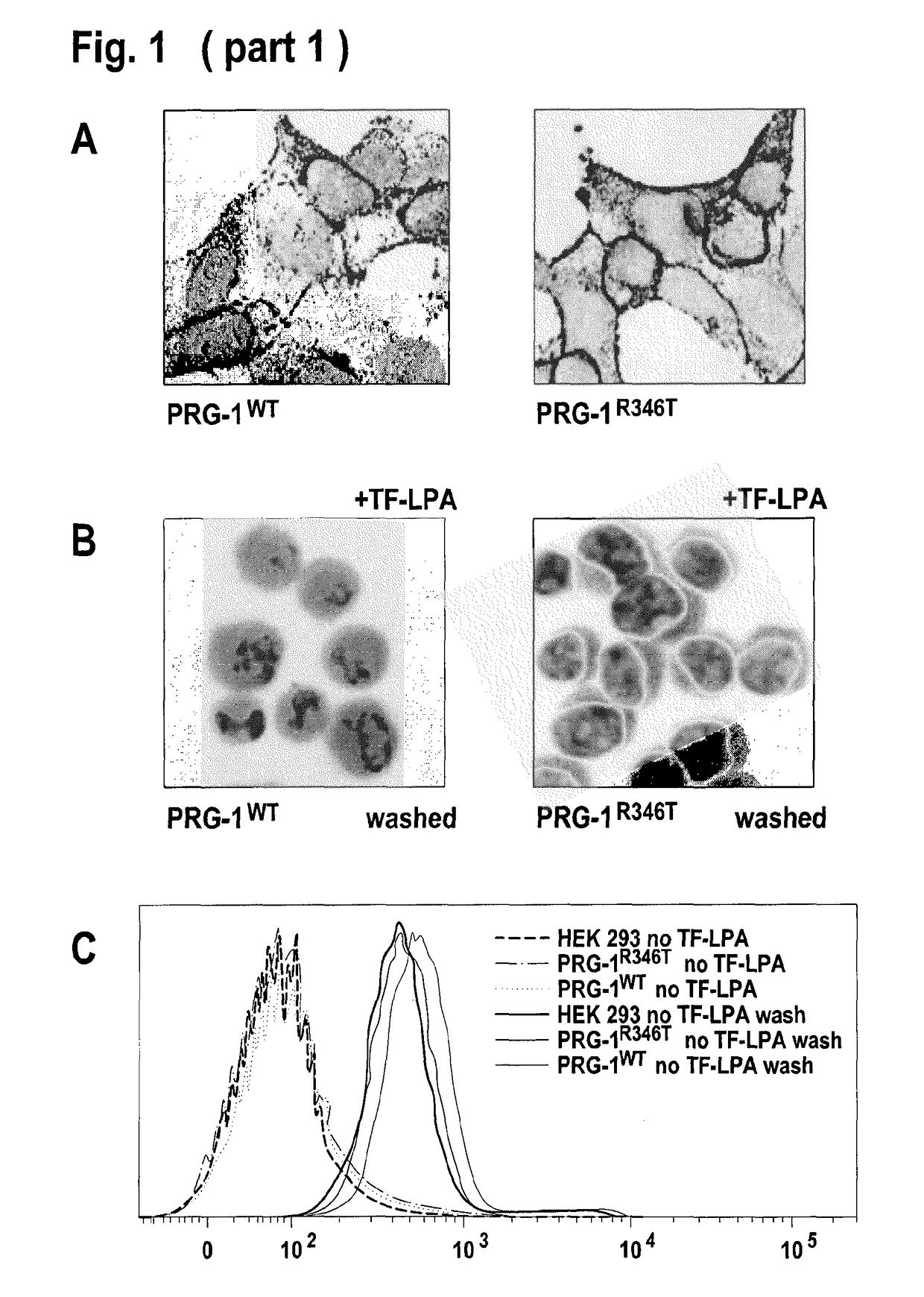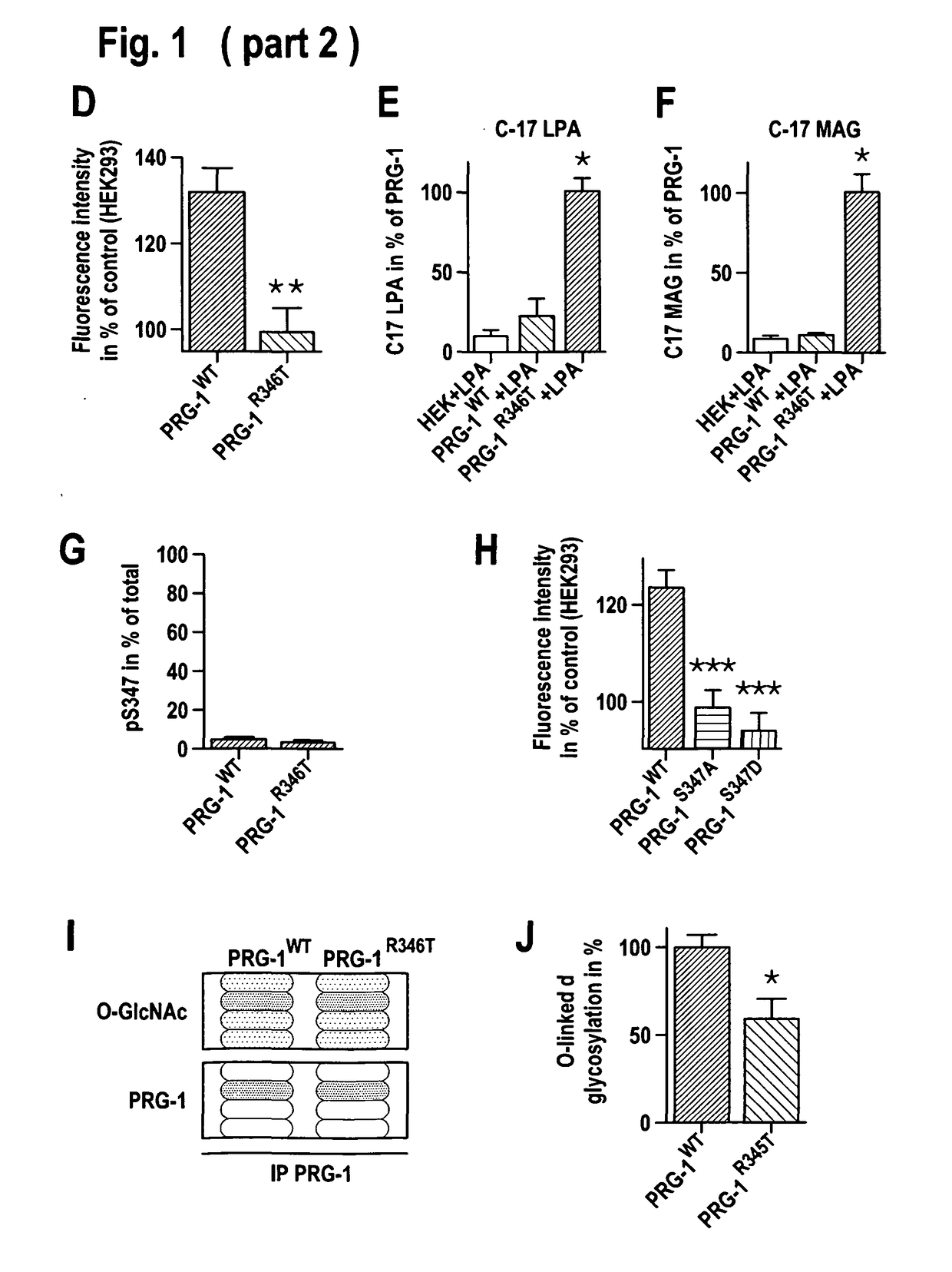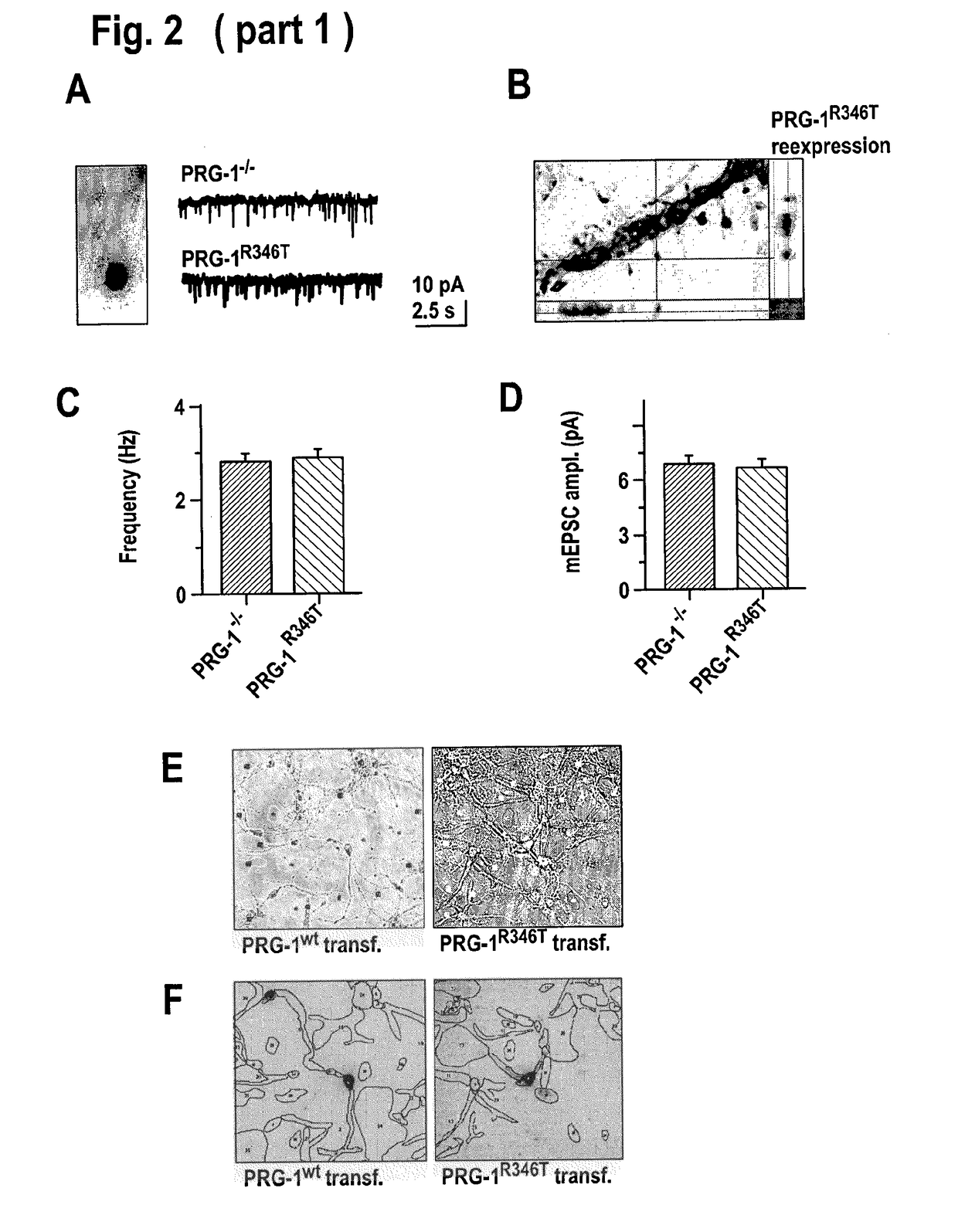Lpa level reduction for treating central nervous system disorders
- Summary
- Abstract
- Description
- Claims
- Application Information
AI Technical Summary
Benefits of technology
Problems solved by technology
Method used
Image
Examples
experimental examples
ILLUSTRATING THE INVENTION
PRG-1R346T is a Loss-of-Function Mutation
[0080]PRG-1 was shown to be involved in internalization of lysophosphatidic acid (LPA) to intracellular postsynaptic compartments (Trimbuch et al., 2009), thereby controlling LPA levels in the synaptic cleft. To understand the molecular consequences of the human SNP resulting in arginine (R) to threonine (T) exchange at position 345 in the amino acid chain of PRG-1, the inventors established HEK cell lines with stable expression of the mouse homolog of this SNP, PRG-1R346T, and found similar membrane localization when compared to wild type PRG-1 (wtPRG-1, FIG. 1A). After application of fluorescence labeled LPA (TopFluor(TF)LPA) and removal of surface bound TF-LPA using 0.001% SDS, PRG-1R346T expressing cells displayed a lower fluorescence signal in intracellular compartments (FIG. 1B). This finding was quantified by FACS analysis (example shown in FIG. 1C) revealing a significantly reduced capacity of PRG-1R346T expr...
PUM
| Property | Measurement | Unit |
|---|---|---|
| Electric potential / voltage | aaaaa | aaaaa |
| Electric potential / voltage | aaaaa | aaaaa |
| Electric potential / voltage | aaaaa | aaaaa |
Abstract
Description
Claims
Application Information
 Login to View More
Login to View More - R&D
- Intellectual Property
- Life Sciences
- Materials
- Tech Scout
- Unparalleled Data Quality
- Higher Quality Content
- 60% Fewer Hallucinations
Browse by: Latest US Patents, China's latest patents, Technical Efficacy Thesaurus, Application Domain, Technology Topic, Popular Technical Reports.
© 2025 PatSnap. All rights reserved.Legal|Privacy policy|Modern Slavery Act Transparency Statement|Sitemap|About US| Contact US: help@patsnap.com



